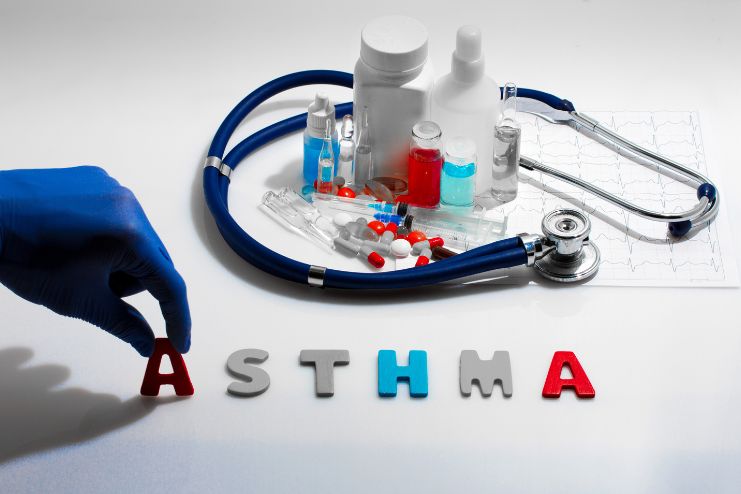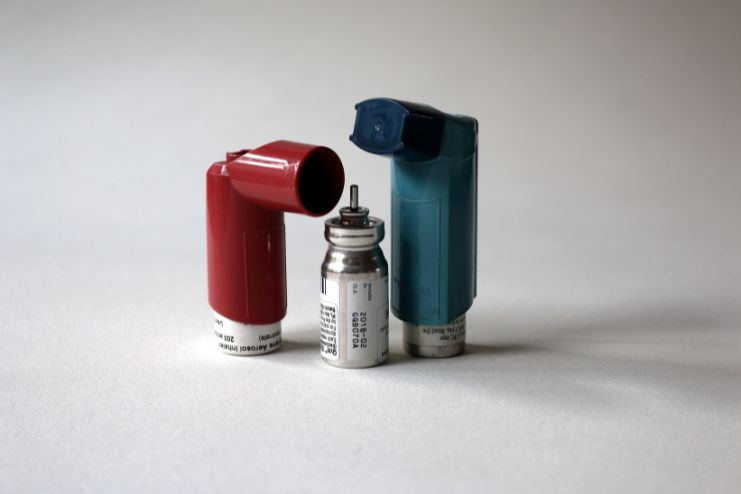One of the most frequent reasons kids miss school is asthma. The airway issue may disturb sleep, play, and other activities. The majority of children with asthma can manage their symptoms, sometimes to the point that flare-ups are infrequent. The most challenging aspect of caring for someone with asthma, however, can be learning about the condition, including when and how to avoid triggers and what medications to use.
A customized asthma action plan for children and early diagnosis can help manage the illness and avoid severe flare-ups. A pediatric asthma action plan ensures prompt and efficient responses by outlining triggers, symptoms, medications, and actions to take in the event of a child’s asthma emergency plan.
Parents, guardians, educators, and medical professionals are all essential to effectively managing asthma. Schools should establish an asthma plan to address children’s needs. This article will explore the basics of asthma in children, creating action plans, and practical tips for home and school management.
Read More: 10 Common Triggers That Could Worsen Your Asthma
Recognizing the Signs of Asthma in Children
The signs and symptoms of asthma vary from child to child. Additionally, a child’s symptoms may change from episode to episode. Symptoms of childhood asthma can include:
- Frequent episodes of coughing. Your child may have coughing spells while laughing or playing. Additionally, they could happen at night or immediately after your child wakes up. Their only symptom is coughing.
- Play with less energy.
- Breathing too quickly or experiencing dyspnea.
- Complaining that their chest “hurts” or feels tight.
- When your child tries to exhale, the space between their neck and ribs sinks. Retractions indicate that your child is having difficulty breathing.
- Fatigue or a sense of weakness may signal underlying health issues.
- Difficulty in eating or sucking.
It is well established that childhood asthma is more common in boys before puberty, usually goes into remission after puberty or in early adulthood, and rarely results in asthma attacks that are severe enough to be fatal. Children with asthma typically outgrow the illness and experience fewer flare-ups than adults.
Genetic causes frequently cause asthma in children, and children of asthmatic parents are at a significant risk of inheriting the ailment. The health of the mother can influence the emergence of asthma in a child during pregnancy.
In contrast, adult-onset asthma affects women more commonly, rarely goes into remission, and significantly increases the risk of death from severe asthma attacks compared to childhood asthma. Adult-onset asthma can be inherited, induced by different allergens or environmental factors, or acquired. It frequently requires daily medication or treatments to prevent flare-ups. Smoking is also a significant cause of adult-onset asthma for apparent reasons.
Read More: 7 Travel Mistakes to Avoid If You Have Asthma
Helping Kids Understand Their Asthma

You might think that you are the only one who can keep your child safe if they have been diagnosed with asthma. One of the first stages to controlling your child’s asthma is understanding their condition, depending on their age. When taught about their asthma, children feel better and more in charge of their health. Providing age-appropriate explanations is crucial.
When children with asthma experience symptoms, they might not always comprehend what is happening. However, Early asthma education can improve your child’s ability to communicate with you, their teachers, and other caregivers when they experience symptoms. Additionally, this will help children prepare to care for themselves as they age.
- Always illustrate your points with photos; ask your doctor if you don’t have any. You must tailor these explanations to your child’s asthma symptoms and treatment strategy.
- Discuss the symptoms of an asthma attack. Your lungs are twitching because you have asthma. It indicates that the lungs constrict as you breathe in and produce thick and sticky mucus. It is the reason you have trouble breathing and want to cough.
- Asthma can be challenging and dangerous. The doctor helps us determine the best ways to care for it so that we can play and behave like other children. We must also see the doctor frequently to ensure that we are taking our medications as prescribed and not experiencing any breathing difficulties.
- Explain how to manage asthma in kids using straightforward language and interesting techniques, such as identifying early warning indicators and adhering to steps in the asthma action plan procedures.
- While school-age children may benefit from stories or analogies such as “asthma is like a bouncy ball in your lungs that makes it hard to breathe,” asthma symptoms in toddlers can be explained better by entertaining pictures or puppets.
- Healthcare providers’ assistance is also crucial. Pediatricians can explain asthma treatment plans for kids in a comforting and easy way for the child to understand. Children who understand asthma better are better able to control it effectively.
Read More: New Born’s Exposure To Home Cleaning Products Can Induce Asthma, New Study Finds
Inhaler Techniques for Children

Although inhaled medications are essential for treating childhood asthma, their effectiveness depends on how they are used. Properly using the inhaler to deliver the drug to the lungs improves the response. If the medication is taken improperly, little or no medication will enter the lungs.
Teaching children how to use their inhalers correctly is essential to managing asthma effectively. Begin by providing detailed instructions:
- Clean their hands.
- Examine the inhaler mouthpiece for any obstructions after removing the cap.
- Shake inhaler and, if directed, apply a spacer also.
- After placing the mouthpiece in their mouth and applying pressure to the inhaler, the youngster should take a slow, deep breath.
- Hold for at least ten seconds, then you should release your breath.
- Repeat as necessary.
- After they finish, replace the mouthpiece cover and store the inhaler conveniently.
To make the process enjoyable, use visual aids and tools such as charts, attractive stickers, or colored inhaler masks. Children can be motivated by making using an inhaler a game or by rewarding regular use.
Check out this helpful inhaler tutorial video for additional information on the proper methods. Children proficient with inhaler use can better control their asthma and receive the full benefits of their medicine.
Read More: 7 Breathing Exercises To Fight Asthma- A Natural Relief and Normal Breath
Effective Communication and Support for Asthma Management

A robust support system and regular communication are essential for asthma management in children. Start by drafting a concise asthma action plan that outlines your child’s symptoms, medications, triggers, and emergency procedures for the school and caregivers. Schools may also implement a 504 plan.
Schools create formal 504 plans to provide necessary support for children with disabilities, including any ailment that significantly restricts day-to-day activities.
These plans avoid discrimination and defend the rights of students with impairments in the classroom. Section 504 of the Rehabilitation Act covers them. This law pertains to civil rights.
Make an appointment with your child’s physician in advance. Include your child’s asthma, overall health, and any other worries you may have in the conversation. A good time to upgrade is now as well:
- Authorization forms for medications.
- Leave prescribed drugs at school.
- Asthma Action Plan forms and care plans for schools.
- Bodily form when required.
Schedule a meeting with the school nurse or staff before the start of classes. This appointment allows you to:
- Inform the school nurse or the school about any changes in your child’s health.
- Describe any summertime asthma symptoms you have had.
- Discuss the child’s asthma triggers and any necessary modifications.
- Permit the school in writing to speak with your child’s medical staff about their health.
Remember to inquire about the school nurse’s schedule and determine who will administer your child’s medication if the school nurse is unavailable.
Remember that your extended family, caregiver, and babysitter are all aware of your children’s asthma treatment plan. For easy access, distribute digital resources or use printouts. You can get the Kids’ Asthma Action Plan Template.
Read More: 10 Effective Yoga Asanas for Asthma Relief That Alleviates The Problem
Conclusion
Asthma doesn’t have to restrict your child’s potential. Children with asthma can lead an active, healthy life with the right resources, encouragement, and communication. Parents, caregivers, educators, and medical professionals can work together closely and follow a customized asthma action plan to ensure long-term asthma control for children.
Regularly reviewing and updating your pediatric asthma action plan will keep you in line with your child’s evolving needs and help avoid unplanned asthma flare-ups.
If you are prepared, knowledgeable, and proactive, you and your child may confidently navigate life with asthma, one breath at a time.
FAQs
1. Can My Child Outgrow Asthma?
As children age, it’s normal for their asthma symptoms to decrease. However, asthma is a chronic, lifelong condition with no known solution. Although it can recur later in life, some children have a period of remission with few symptoms. Their airways are nonetheless susceptible. Airway inflammation may persist even after symptoms appear to go away and may resurface in response to novel causes.
2. What Are the Most Common Triggers for Asthma in Children?
Things known as triggers might increase the likelihood of asthma flare-ups. Allergies to pollen, mold, pet dander, and respiratory infections such as colds, the flu, or COVID-19 are common causes of asthma.
3. How Can I Help My Child Use Their Inhaler Correctly?
Focus on utilizing a spacer, practicing breathing techniques, and ensuring your child uses the metered-dose inhaler (MDI) or nebulizer appropriately to help them use their inhaler correctly. If your kid has trouble using a mouthpiece, use a mask spacer and consult a healthcare provider to ensure the correct technique.
4. What Should I Do if My Child Has an Asthma Attack at School?
If your child has an asthma attack at school, stop their activity immediately and assist them in sitting up straight. If they have a quick-relief inhaler, encourage them to use it; if not, call the school nurse. Throughout the process, remain composed and comfort your youngster.
5. What Should Be Included in My Child’s Asthma Action Plan?
Your asthma action plan should include a list of your regular asthma medications and their dosages. It should also include guidance on what to do if your asthma worsens, including whether to visit the emergency room or call a doctor and when to take additional medications or doses. Finally, it should include instructions on how to handle an asthma attack.
6. Are There Any Special Considerations for Children with Asthma and Sports?
Indeed, certain factors must be considered when kids with asthma play sports. For participation to be safe and pleasurable, asthma must be well managed, which includes taking medication and avoiding triggers. Pre-medication, selecting less demanding activities, and warm-up and cool-down times can also be helpful.
References
- https://www.mayoclinic.org/diseases-conditions/childhood-asthma/in-depth/asthma-in-children/art-20044383
- https://kidshealth.org/en/parents/asthma-mgmt.html
- https://my.clevelandclinic.org/health/diseases/6776-asthma-in-children
- https://medlineplus.gov/asthmainchildren.html
- https://www.mayoclinic.org/diseases-conditions/childhood-asthma/symptoms-causes/syc-20351507
- https://www.betterhealth.vic.gov.au/health/conditionsandtreatments/asthma-in-children
- https://www.healthline.com/health/severe-asthma/differences-between-childhood-and-adult-onsets
- https://getasthmahelp.org/explain-asthma-to-children/
- https://www.aaaai.org/tools-for-the-public/conditions-library/asthma/teaching-your-child-about-asthma
- https://www.uptodate.com/contents/asthma-inhaler-techniques-in-children-beyond-the-basics/print
- https://www.nyp.org/healthlibrary/multimedia/teaching-your-child-to-use-an-inhaler-without-a-spacer
- https://www.gosh.nhs.uk/conditions-and-treatments/medicines-information/how-help-your-child-use-inhaler-0/
- https://www.ed.gov/laws-and-policy/individuals-disabilities/section-504
- https://www.understood.org/en/articles/section-504-of-the-rehabilitation-act-of-1973-what-you-need-to-know
- https://kidshealth.org/en/parents/504-plans.html
- https://allergyasthmanetwork.org/allergies-and-asthma-at-school/managing-asthma-in-school-a-guide-for-parents/
- https://aafa.org/asthma/asthma-treatment/asthma-treatment-action-plan/
In this Article
















